Key takeaways:
- Understanding all potential costs in pre-production, production, and post-production is essential for effective budget management.
- Investing in skilled professionals and using specialized budgeting tools can enhance both quality and efficiency in video production.
- Emphasizing flexibility and tracking every expense, no matter how small, can prevent budget overruns and facilitate better planning.
- Evaluating budget effectiveness involves assessing the correlation between production costs and audience engagement, highlighting the value of viewer feedback.
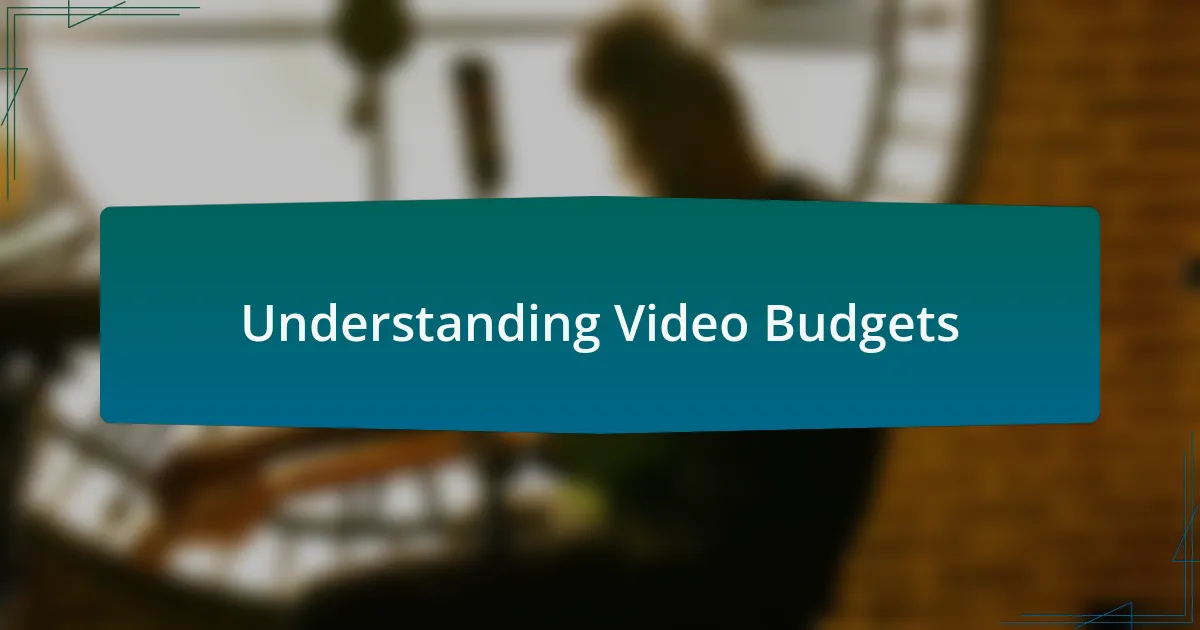
Understanding Video Budgets
Understanding video budgets is crucial for anyone looking to create compelling visual content. When I first delved into video production, I underestimated how much a well-planned budget could impact my final product. Have you ever been tempted to cut costs only to realize later that you compromised quality? I learned this lesson the hard way.
One essential aspect of managing a video budget is identifying all potential costs, including pre-production, production, and post-production expenses. I remember a project where I clearly outlined every detail, only to discover that my proposed location meant higher rental fees. It was eye-opening to see how logistics can balloon costs unexpectedly, and it pushed me to be more meticulous in planning.
Moreover, it’s essential to leave room for unforeseen expenses. In one of my earlier projects, we faced unexpected weather conditions that required us to rent additional equipment. Would I have accounted for that in my budget? Probably not at first, but those experiences taught me that flexibility in your budget can lead to better problem-solving and an overall smoother production process.
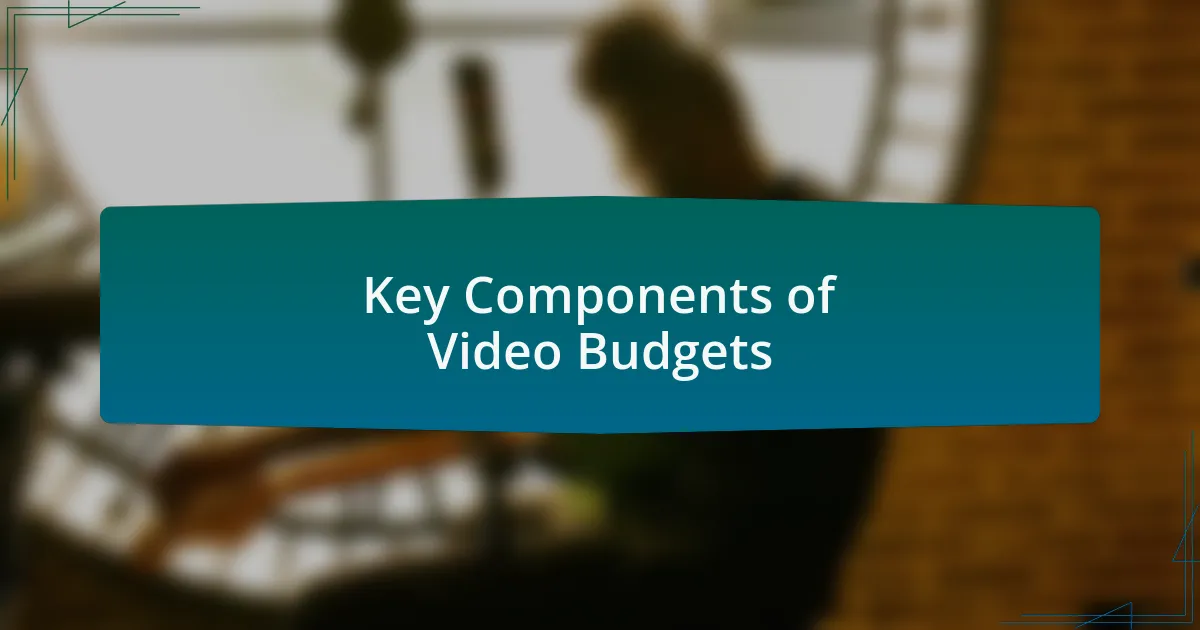
Key Components of Video Budgets
When managing a video budget, one of the most pivotal components I’ve encountered is the labor cost. I once worked on a project where I underestimated the time and expertise required from my crew, thinking I could just assemble a group of friends to help. It quickly became apparent that not all hands are created equal; the added stress of inexperience turned what should have been a fun collaboration into a logistical nightmare. Have you ever experienced a similar miscalculation? I’ve learned that investing in skilled professionals can save both time and frustration in the long run.
Another critical aspect is equipment rental and location fees. Once, I decided to shoot at a picturesque venue without confirming the full cost of permits and equipment. It felt like a dream to capture that setting, but by the end, it was a budget strain I hadn’t anticipated. I often wonder how many budding creators overlook this planning phase—it’s tempting to chase inspiration without considering the financial realities behind it.
Finally, let’s talk about post-production. I vividly recall a project where I skimped on editing time, thinking I could just push through. The result? A final product that didn’t match my initial vision and hurt my reputation in the long run. All these elements taught me that video budgets aren’t just numbers; they reflect the value of quality, creativity, and professional growth. Do you take time to evaluate each component of your budget, or do you tend to overlook some of those critical details? Trust me, paying attention to every facet can make all the difference in achieving the desired outcome.

Tools for Managing Video Budgets
When it comes to managing video budgets, I find that using specialized software can be a game changer. I remember when I first transitioned from simple spreadsheets to a dedicated budgeting tool; it felt like switching from a flip phone to a smartphone. The intuitive features, such as real-time tracking and customizable expense categories, made keeping tabs on costs feel less like a chore and more like a strategic game. Have you tried using any budgeting software? If not, I highly recommend exploring options like Movie Magic Budgeting or Shotgun, which cater specifically to the intricacies of film and video production.
Another essential tool I’ve come to appreciate is cloud storage for collaboration. Early in my career, I struggled with sharing budget documents and versions with my team, leading to confusion and mistakes. I still recall the day we decided to use a cloud service like Google Drive. Suddenly, everyone could access the latest budget draft simultaneously, reducing errors and miscommunication. How do you manage collaboration? If you haven’t considered this yet, it can make group projects smoother and more efficient.
I can’t stress enough the value of budgeting templates. Initially, I crafted my own from scratch, which resulted in countless hours of frustration. Now, I use pre-made templates that have been designed by professionals. They help me save time and ensure I don’t overlook any critical expense categories. Have you ever thought about how much easier life could be with a solid foundation laid out for you? Using these templates has not only streamlined my workflow but has also brought a sense of confidence knowing that I’m covering all my bases.
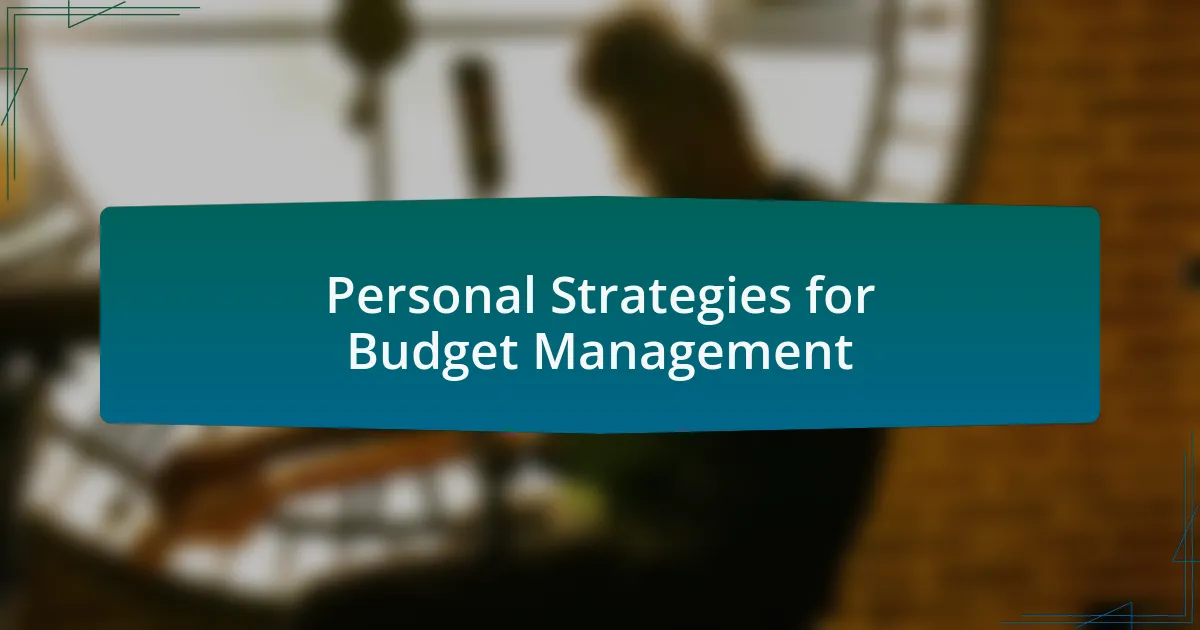
Personal Strategies for Budget Management
When it comes to budget management, my first strategy is to set clear priorities. I remember a project where I had to choose between hiring a talented camera operator or upgrading our lighting equipment. After some tough reflection, I opted for the operator, knowing their skills would elevate the overall quality of the project. It’s crucial to evaluate what will truly impact your video’s success. Have you ever faced a similar choice? Understanding your priorities can make those decisions much easier.
Another strategy I employ is to track every expense meticulously, no matter how small. I learned this lesson the hard way during a project where a forgotten coffee budget crept up to a significant amount, throwing off my entire budget. Now, I record even the littlest costs because every dollar counts. I often ask myself, “What small expense could I overlook today that might surprise me tomorrow?” This mindset helps keep my budgeting transparent and manageable.
Lastly, I believe in the power of flexibility. Sometimes, unexpected costs arise that can divert your original plan. I had one project where last-minute location fees nearly derailed us. Instead of panicking, I adjusted our other spending areas to accommodate these new expenses. This experience taught me the importance of always having a buffer in my budget. Do you include a buffer in your planning? Adapting to changes not only keeps your budget intact but can also lead to creative solutions you might not have initially considered.
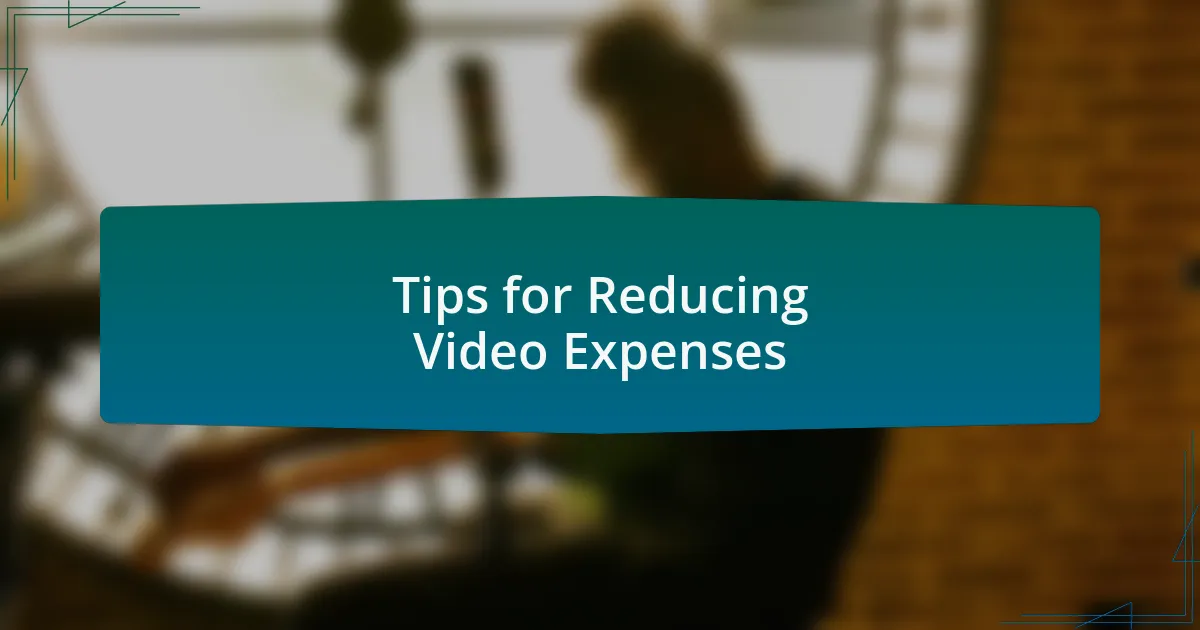
Tips for Reducing Video Expenses
When it comes to reducing video expenses, leveraging existing resources can be a game changer. I recall a time when I decided to shoot a music video at a friend’s studio rather than renting a professional space. Not only did we save money, but the familiarity of the environment also sparked our creativity. Have you checked what resources you have at your disposal? Sometimes the best locations and equipment are right under your nose.
Another key tactic is to use a smaller crew. In my experience, working with a tight-knit group can enhance collaboration and streamline the production process. There was a project where we achieved incredible results with just three team members, instead of the usual ten. It made me realize that too many voices can sometimes dilute creativity. Have you ever considered how a small crew could impact your production? The intimacy of a smaller team can lead to quicker decisions and a unified vision.
Lastly, plan your shoots around off-peak times for venues and talent. I once managed to book a well-known artist at half the usual rate because we scheduled the shoot during their downtime. This not only saved us money but also added an excited energy as they were more relaxed and willing to collaborate. Have you thought about how timing can affect your budget? Finding those off-peak times can significantly enhance both your creativity and your cost-effectiveness.
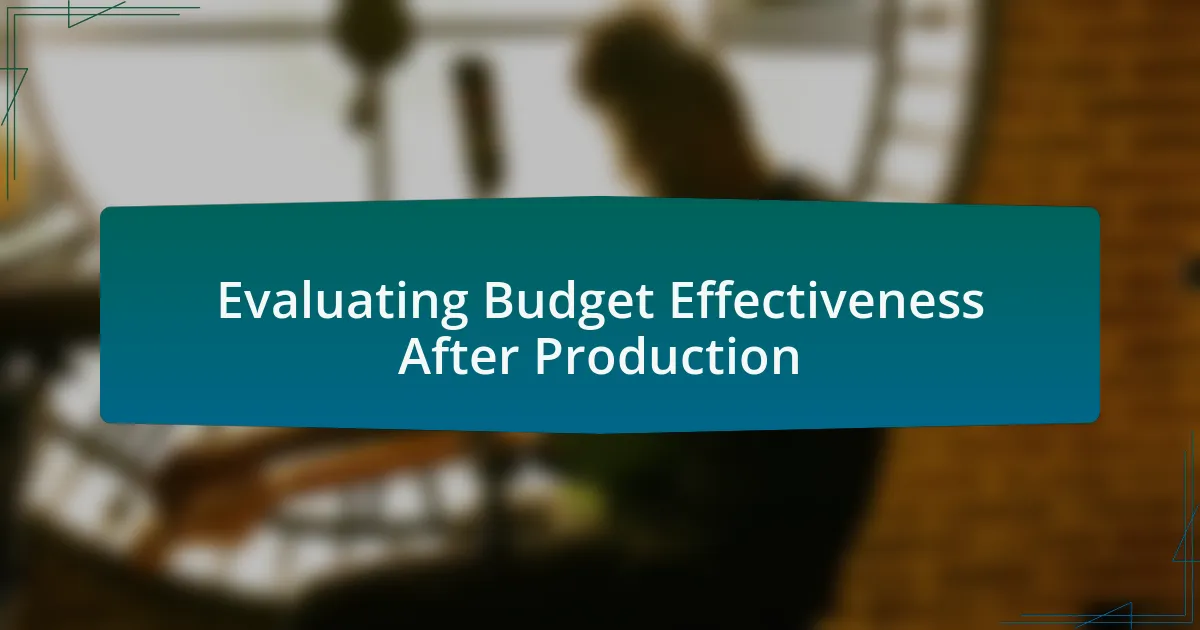
Evaluating Budget Effectiveness After Production
Evaluating budget effectiveness after production requires a close examination of the final product against the initial financial outlay. I remember assessing a particularly ambitious project where we overspent on special effects. While the end result was visually stunning, I realized that the impact on the audience might not have justified the higher costs. How often do we get so caught up in the glitz that we forget to measure its real value?
Tracking viewership metrics is also crucial. After one music video, I was ecstatic to see high engagement numbers, but the budget allocation toward promotional efforts was equally significant. Reflecting on the data, I learned that a more balanced investment in both production and marketing could yield better financial returns. Have you ever analyzed how your expenditures align with viewer engagement?
Finally, seeking feedback from your audience can be illuminating. In a recent project, I reached out to viewers for their opinions, and the insights were eye-opening. They appreciated authenticity over expensive visuals, affirming my belief that sometimes, the heart of the music is more meaningful than the latest technology. How valuable is it to listen to your audience when evaluating past investments? It can shift your entire approach to future projects.